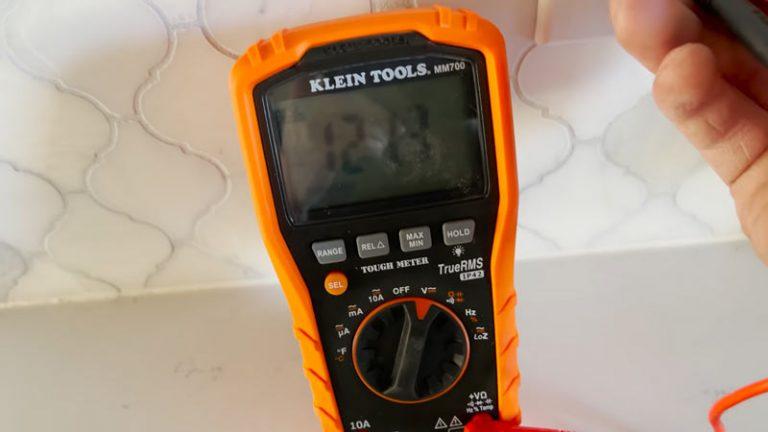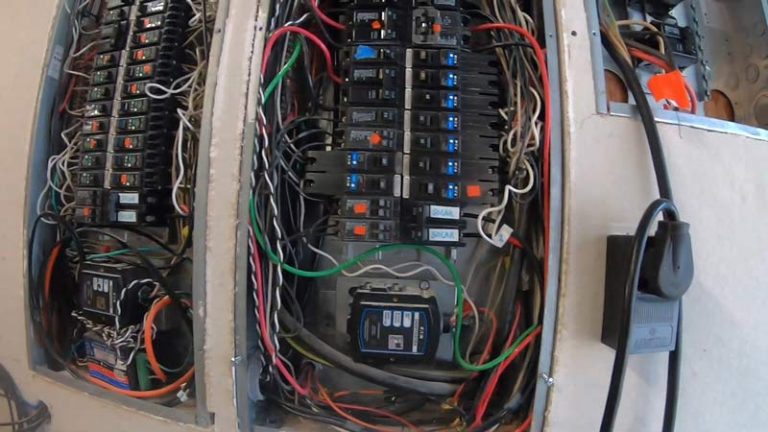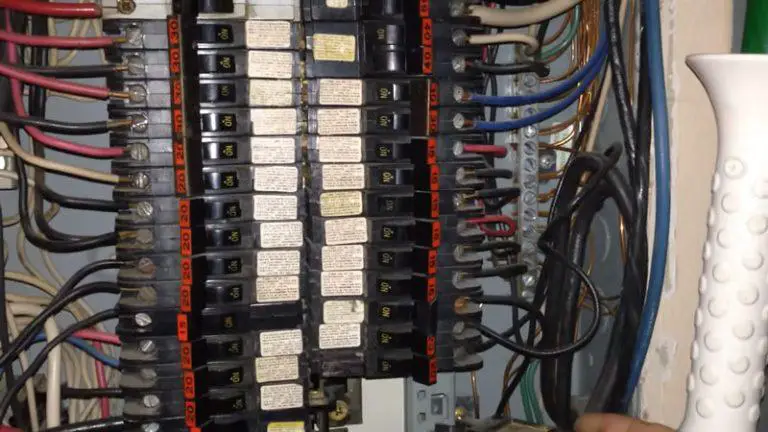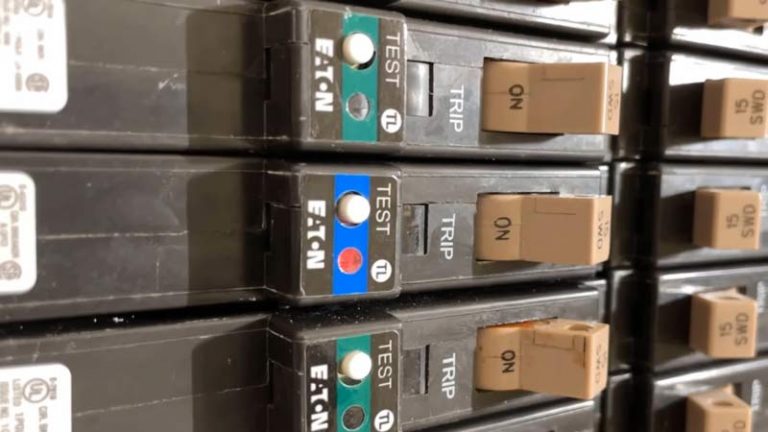Why Would a 200 Amp Main Breaker Gets Hot and Trips?
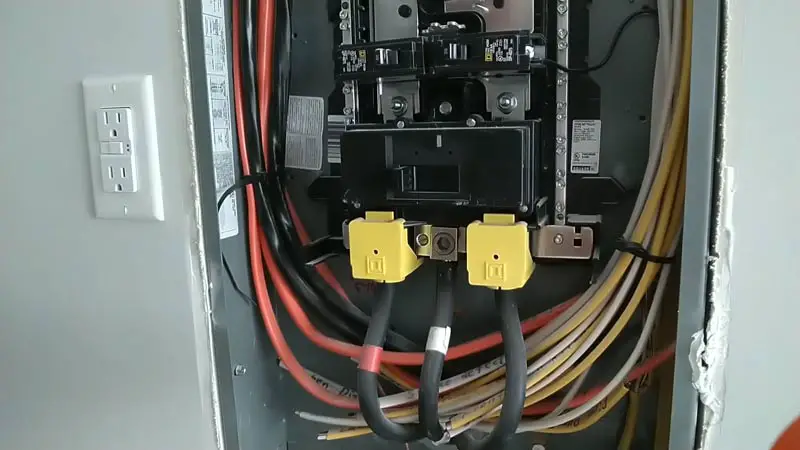
A 200 amp main breaker that is getting hot and tripping is a serious problem that needs to be addressed promptly. This type of breaker is designed to protect your home’s electrical system from overheating and other hazards, and if it is not functioning properly, it can pose a serious safety risk.
Whether you are experiencing problems with your main breaker tripping or simply notice that it is getting hot, it is important to diagnose and fix the issue as soon as possible to avoid the risk of electrical fires or other hazards.
In this article, we will explore some of the possible causes of a 200 amp main breaker getting hot and tripping, and provide some tips on how to diagnose and fix the problem.
You'll Learn About
Possible Causes Of A 200 Amp Main Breaker Getting Hot And Tripping
There are several possible causes of a main breaker overheating, including:
Loose Connections
One of the most common causes of a 200 amp main breaker getting hot and tripping is loose connections on the breaker itself. Over time, these connections can become loose due to vibrations, temperature changes, or simply the passage of time.
When the connections are loose, it can cause resistance and overheat, which can cause the breaker to trip. To fix this problem, you will need to tighten the connections on the breaker to ensure that they are secure.
Voltage Drop
Another potential cause of a 200 amp main breaker getting hot and tripping is a voltage drop on one of the line supplies to the panel. This can be caused by a variety of factors, such as damaged or loose service conductors or connections, or problems with the power company’s distribution system.
If you have a voltage drop on one of the line supplies, it can cause the breaker to trip or the lights to flicker. To fix this problem, you will need to repair or replace any damaged service conductors or connections and check with your power company to see if there are any issues on their end that need to be addressed.
Overloading The Circuit Panel
If there is more electrical current being used than the circuit panel is designed to handle, it can cause the main breaker to become overloaded and start to overheat.
This can happen if you have too many electrical devices plugged in and running at the same time, or if you have a large appliance (such as an air conditioning unit) that is drawing a lot of power.
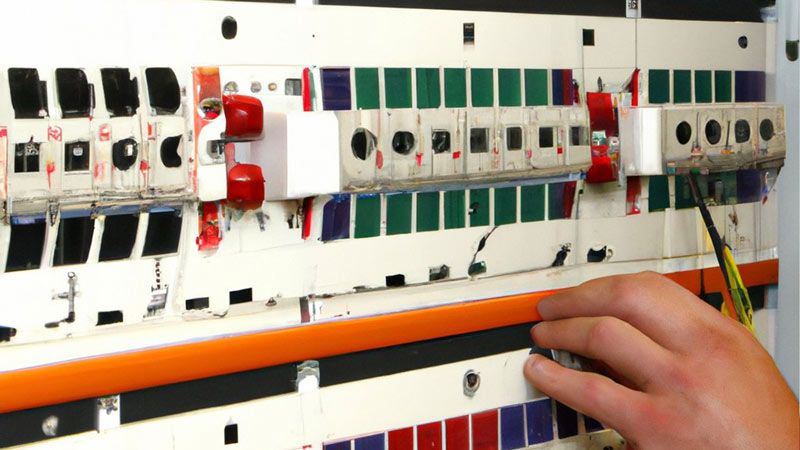
Faulty Breaker
A faulty breaker is another potential cause of a 200 amp main breaker getting hot and tripping. Over time, breakers can wear out or become damaged, and when this happens, they may not function properly. If your breaker is faulty, you will need to replace it with a new one to fix the problem.
Aluminum Service Conductors Or Connections
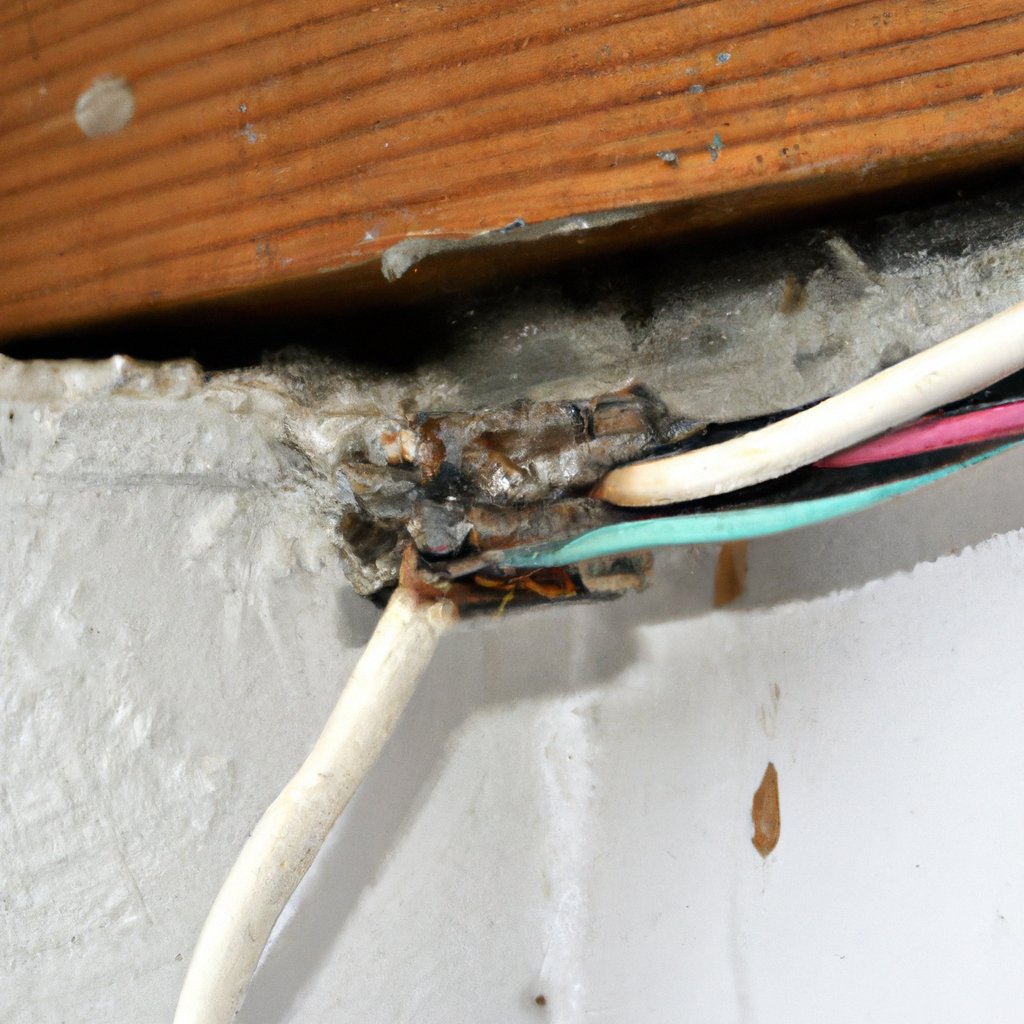
If your home or building has aluminum service conductors or connections, it is possible that these could be causing the main breaker to overheat. Aluminum has a higher resistance than copper, which can cause it to generate more heat when carrying electrical current.
If the aluminum service conductors or connections are not properly coated or terminated, it can cause even more resistance and overheat.
Other Causes
There are also other potential causes of a 200 amp main breaker getting hot and tripping, such as damaged service conductors or connections.
If you have damaged service conductors or connections, they can cause resistance and overheat, which can cause the breaker to trip. To fix this problem, you will need to repair or replace the damaged service conductors or connections.
In any case, it is important to diagnose the problem and fix it as soon as possible to avoid the risk of electrical fires or other hazards. If you are not comfortable or qualified to diagnose and fix the problem yourself, you should contact a licensed electrician to help you.
How To Diagnose The Problem
To diagnose a problem with a 200 amp main breaker that is getting hot and tripping, you will need to follow a few steps:
- You should check the connections on the breaker to see if they are tight and secure. To do this, you will need to locate the breaker in your electrical panel and inspect the connections on the back of it. If the connections are loose, you should tighten them using a wrench. If the connections are already tight, then the problem may be with the breaker itself.
- You should check the line voltage at the panel to see if there is a voltage drop on one of the line supplies. To do this, you will need to use a voltage tester or multimeter. You should measure the voltage on each side of the panel, and compare the readings to the expected voltage for your area (which is typically around 120 volts). If you see a significant voltage drop on one of the line supplies, then this could be the cause of your problem.
- You should also inspect the breaker itself for signs of damage or wear. Look for any visible damage, such as cracks or melting, or any other signs that the breaker is not functioning properly. If you see any of these signs, then the breaker may be faulty and will need to be replaced.
- If you are not comfortable or qualified to diagnose the problem yourself, you should consult with a licensed electrician. An electrician will have the knowledge and experience to properly diagnose the problem and recommend a solution.
- It is important to diagnose the problem as soon as possible to avoid the risk of electrical fires or other hazards. If you are not sure how to diagnose the problem, or if you are not comfortable working with electricity, you should always consult with a licensed electrician for help.
How To Fix The Problem
Once you have diagnosed the problem with your 200 amp main breaker that is getting hot and tripping, you will need to fix it as soon as possible to avoid the risk of electrical fires or other hazards. Here are some steps you can follow to fix the problem:
Tighten Any Loose Connections On The Breaker
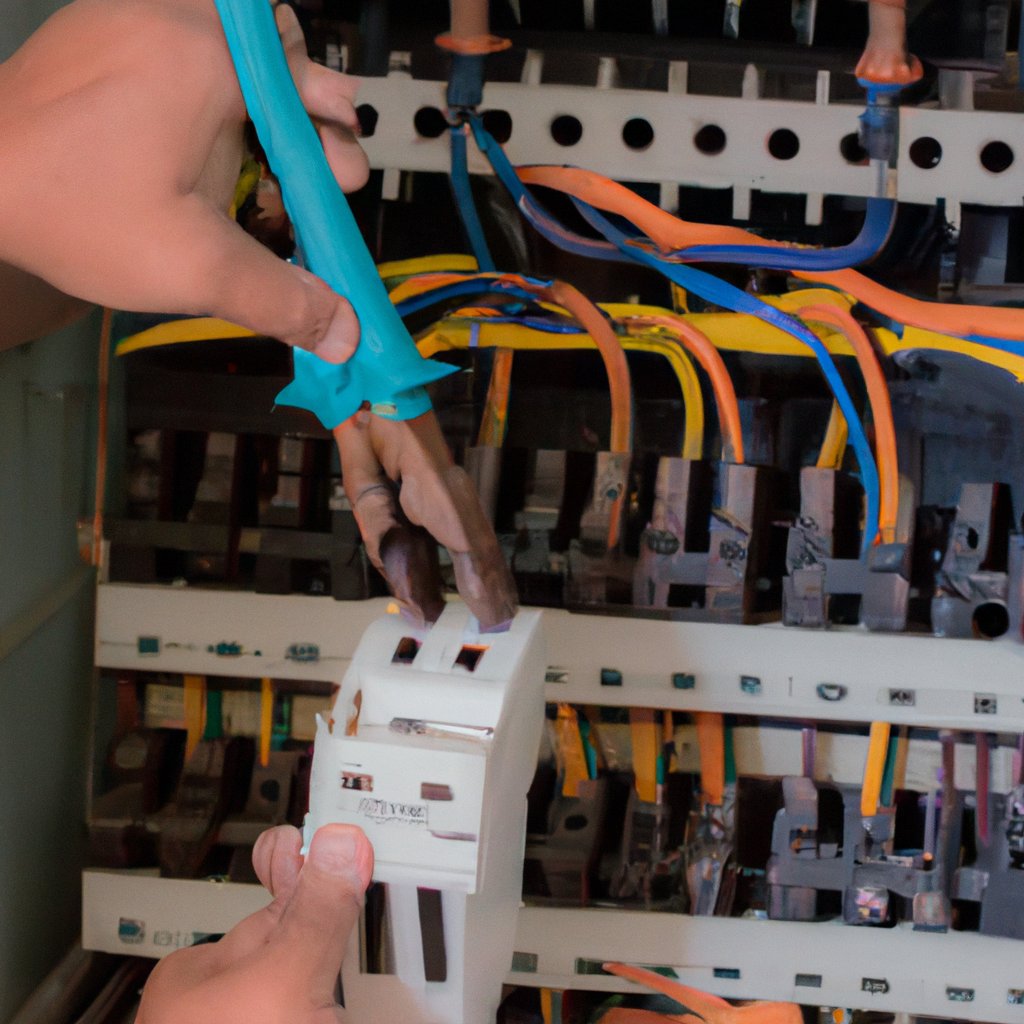
If you have identified loose connections on the breaker as the cause of the problem, you should tighten them using a wrench. Make sure that the connections are secure, but be careful not to overtighten them, as this can cause damage.
Repair Or Replace Any Damaged Service Conductors Or Connections
If you have identified damaged service conductors or connections as the cause of the problem, you will need to repair or replace them.
This may require cutting and splicing the wires, or replacing the damaged conductors or connections with new ones. If you are not comfortable or qualified to do this, you should consult with a licensed electrician for help.
Replace The Breaker If It Is Faulty
If you have identified a faulty breaker as the cause of the problem, you will need to replace it with a new one. This is a job that should only be done by a qualified electrician, as it involves working with live electrical circuits.
Consult With A Licensed Electrician
If you are not comfortable or qualified to fix the problem yourself, you should consult with a licensed electrician for help. An electrician will have the knowledge and experience to properly diagnose and fix the problem.
This will be able to recommend the best course of action to ensure that your electrical system is safe and functioning properly.
It is important to fix the problem as soon as possible to avoid the risk of electrical fires or other hazards. If you are not sure how to fix the problem, or if you are not comfortable working with electricity, you should always consult with a licensed electrician for help.
So, these are the steps you can follow to fix the problem with your 200 amp main breaker that is getting hot and tripping.
What Causes the Main Breaker to Get Hot and Trip?
The fact that it is getting warm and tripping when there is a heavy load, and that the lights in your house are flickering, indicates that there may be an issue with the electrical system.
- One potential cause of the problem could be loose connections on the breaker. These connections can become loose over time, or they may have been installed improperly, which can cause overheating and tripping of the breaker.
- You should check the connections on the breaker to see if they are tight and secure. If they are loose, you should tighten them. If they are already tight, then the breaker itself may be faulty and may need to be replaced.
- Another potential cause of the problem could be a voltage drop on one of the line supplies to the panel. This can be caused by a variety of factors, including damaged or loose service conductors or connections, or problems with the power company’s distribution system.
- If you have a voltage drop on one of the line supplies, it could cause the breaker to trip or the lights to flicker. You should check the line voltage at the panel to see if there is a voltage drop, and if there is, you should try to determine the cause and fix it.
- It is also possible that the problem could be caused by a combination of factors. For example, the breaker may be faulty, and the connections to it may be loose. In this case, fixing the connections may not solve the problem, and the breaker will need to be replaced.
In any case, it is important to address the problem as soon as possible, as overheating and tripping of the main breaker can be a serious safety hazard. If you are not comfortable or qualified to diagnose and fix the problem yourself, you should contact a licensed electrician to help you.
Tips for Dealing with Tripping
Here are a few additional tips for dealing with a 200 amp main breaker that is getting hot and tripping:
Make Sure You Are Not Overloading Your Electrical System
If you are experiencing problems with your main breaker tripping, it is possible that you are simply overloading your electrical system. To avoid this, make sure you are not using too many high-wattage appliances or devices at the same time.
Also, consider adding additional circuits or upgrading your electrical panel if you are consistently running into this problem.
Consider Using A Surge Protector
If you are experiencing problems with your main breaker tripping or your lights flickering, it is possible that you are experiencing voltage surges. To protect your electronics and appliances from these surges, consider using a surge protector.
This can help to reduce the risk of damage and prolong the life of your appliances and devices.
Keep An Eye On Your Circuit Breaker Panel
If you notice that your circuit breaker panel is hot to the touch or that one of the breakers is consistently tripping, this could be a sign of a problem. Pay attention to these signs and contact a licensed electrician if you are concerned about the safety of your electrical system.
Don’t Try To Fix The Problem Yourself If You Are Not Qualified
If you are not comfortable or qualified to diagnose and fix problems with your electrical system, it is important to leave this work to a licensed electrician. Attempting to fix these problems yourself can be dangerous and can potentially cause even more damage to your electrical system.
Test Your GFCI Outlets Regularly
GFCI outlets are designed to protect you from electrical shocks, and they should be tested regularly to ensure that they are working properly. To test a GFCI outlet, simply push the “test” button and then push the “reset” button. If the outlet does not function properly, it may need to be replaced.
Conclusion
A 200 amp main breaker that is getting hot and tripping is a serious problem that needs to be addressed promptly to avoid the risk of electrical fires or other hazards. There are several potential causes of this problem, including loose connections on the breaker, a voltage drop on one of the line supplies to the panel, or a faulty breaker.
To diagnose and fix the problem, you will need to follow a few steps, such as checking the connections on the breaker, checking the line voltage at the panel, inspecting the breaker itself for signs of damage or wear, and possibly repairing or replacing damaged service conductors or connections.
If you are not comfortable or qualified to diagnose or fix the problem yourself, you should consult with a licensed electrician for help. It is important to address this issue promptly to ensure the safety of your electrical system and your home.

